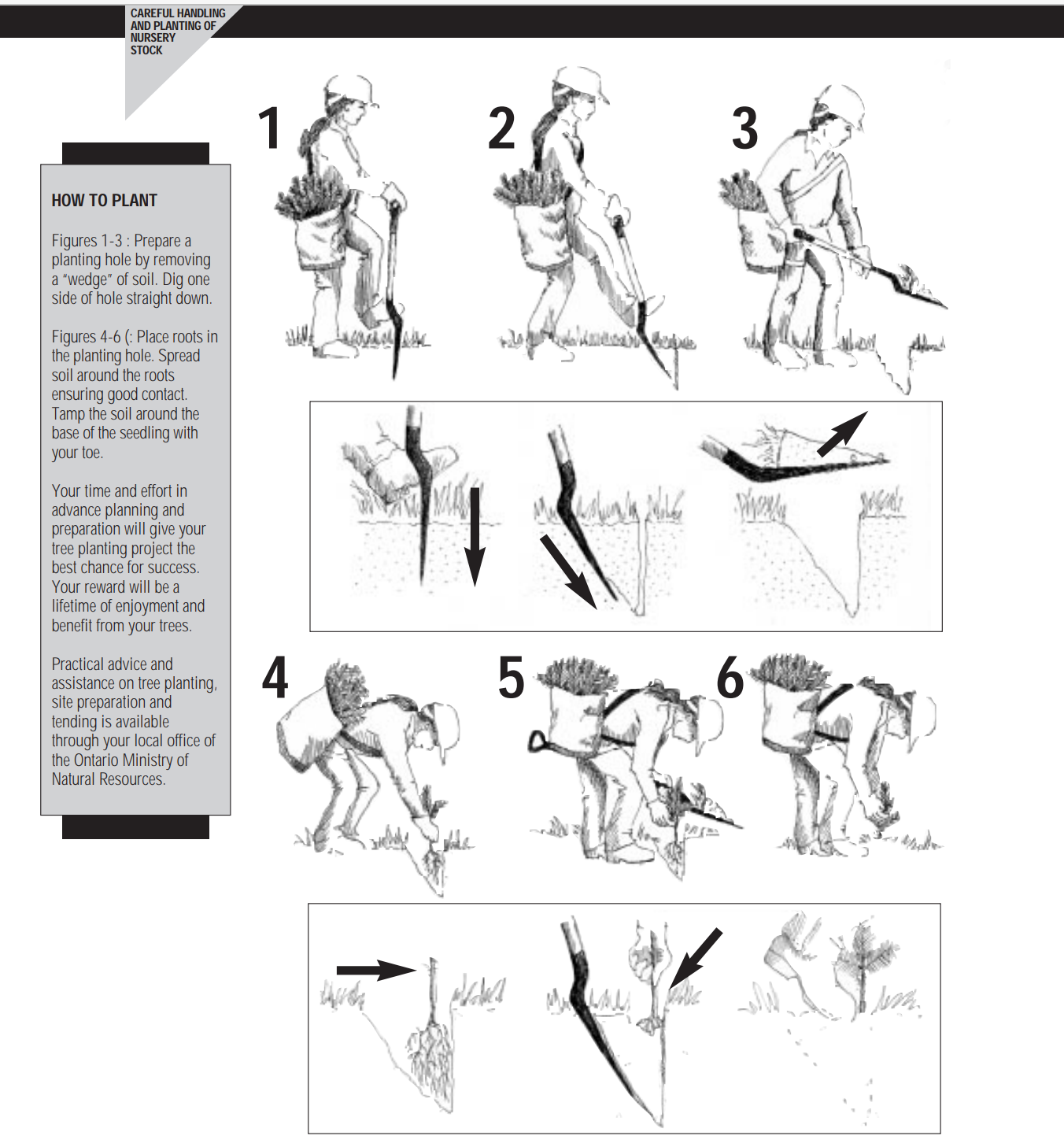Seedlings may be obtained at various ages/ prices. The least expensive seedlings are young er plants supplied as bare root versions. Older seedlings are planted in containers; these have higher survival likelihood but also are more expensive. The container- based seedlings can be planted at any time but bare root versions are generally planted in the spring, so they are better able to survive the coming winter.
A method to plant bare root seedlings is described in a note Careful Handling and Planting of Nursery Stock (http://www.lrconline.com/Extension_Notes_English/forestry/crflhnd.html’ and partly reproduced below:
- Choose the best site, do not plant seedlings where there are waterholes, stumps or rocks and do not plant more than one tree per hole
- Make sure the hole is deep enough for the root system
- Carefully remove only one tree at a time (separate roots by shaking loose in the bag) and plant immediately
- Lay the roots straight down in the hole in a natural arrangement — do not bunch, twist, double- over, or bend them
- Keep organic matter, stones, and twigs out of the hole (unless the soil itself is organic). They create air pockets that dry out roots
- Plant seedlings slightly above the root collar swelling.
- Tamp soil with the toe (not the heel) to remove air pockets
- For container stock, handle seedlings by the plug (not the stem)
- Plant upright and cover the plug with soil. Do not bury live branches or foliage, or leave any roots exposed to the air
- Take pride in a job well done
- Care until Free To Grow.

Where possible, add mulch around the seedlings in a circle of 0.5 to 1.5 metre: this helps reduce competition and makes better use of available water (increases infiltration, decreases evaporation).

